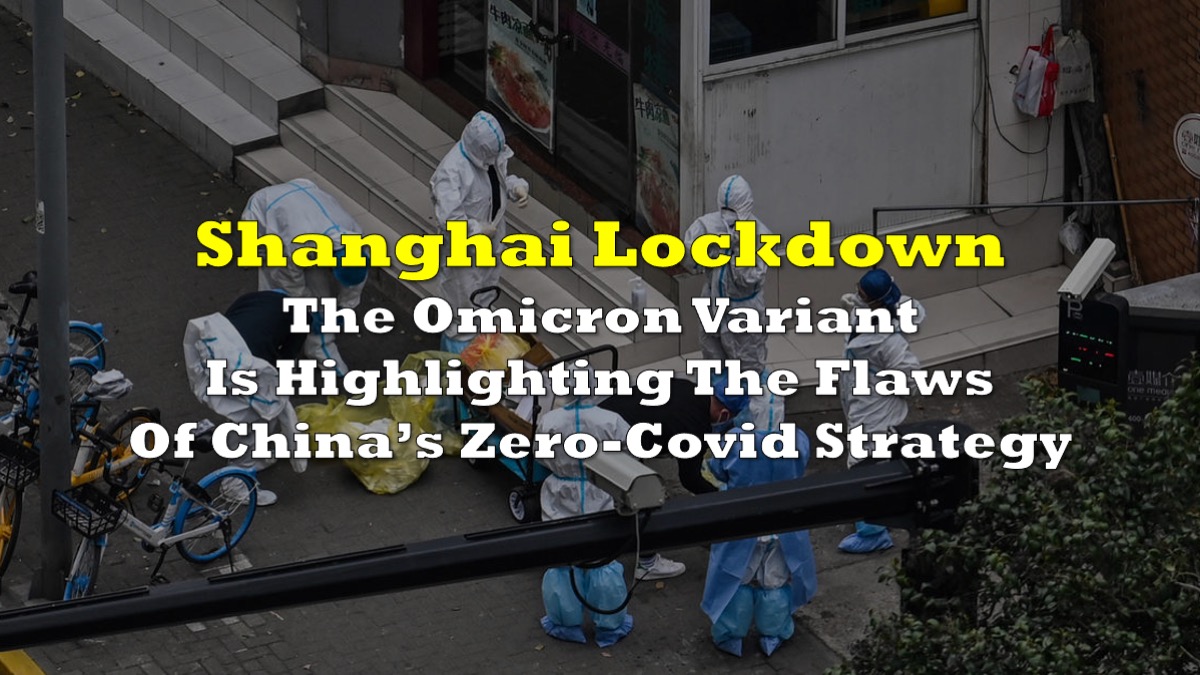Contrary to what Chinese authorities want their residents to believe, the highly transmissible Omicron variant is putting China’s zero-Covid strategy to the test — and it seems to be failing. The number of infections in Shanghai, the country’s financial capital, has been breaching all-time records, with 21,000 new cases just on Friday alone.
The overwhelming spread of the virus has put the city in an indefinite lockdown with much of its 25 million residents unprepared. People are running out of food and ways to get it with delivery services limited, many needing medicine they’re not allowed to go out to get, with some — including children a few months old, and the ailing elderly — forced to be separated from their caregivers.
And yet, the virus keeps spreading.
China’s zero-Covid strategy has been one of the world’s most stringent and effective, at least in the first waves of the pandemic. Its goal is to stamp out transmission through mass testing, aggressive contact-tracing, immediate isolation of infected people, and quarantine of their close contacts. The strategy reduced the country’s transmission rate to near zero, and kept its reported death rate much lower than other developed countries.
But the Omicron surge is another story, and the lockdowns are proving obsolete. China continues to fumble in an attempt to contain a variant that has caused, and is still causing record-breaking surges across the world, instead of focusing on managing its inevitable impact.
In a commentary posted on Facebook, Ho Ching, spouse of Singapore Prime Minister Lee Hsien Loong, underscored the inefficiencies of this strategy, and called for China to instead focus on vaccinations.
A Facebook post by Ho Ching, #Singapore’s version of a First Lady, critiquing Shanghai’s system of mass lockdowns and testing has gone viral in #China. “We cannot lockdown forever,” she writes, encouraging Shanghai to adopt Pfizer’s vaccine. 1/ pic.twitter.com/rspGNcO84G
— Liza Lin (@lizalinwsj) April 8, 2022
The country’s choice of vaccines appears to be more political than anything else. Prime Minister Xi Jinping, in his aggressive bid to champion self-reliance, has kept mRNA vaccines from the West out of China. And because the country itself has yet to develop their own mRNA shot over two years into the pandemic, its residents have had to rely on the two homegrown vaccines, SinoVac and Sinopharm, that both use a century-old method for inoculation. The efficacy of these two brands have been in question, and officials have acknowledged their low overall effectiveness.
China’s continued resistance to Western vaccines is compounded by its low vaccination rate of the elderly. Before the Omicron surge, about 65% of its population over 80 had yet to be inoculated.
Many residents have taken to social media to share their pleas. Some reports say that the country’s internet watchdog, Cyberspace Administration of China, has started scrubbing negative posts off social media. They have also told people to be wary and “distinguish rumours from facts.”
The human cost of this awful lockdown is unfathomable, people are being driven to the brink, the mental health cost is immeasurable, this man sums up how many are feeling at the moment pic.twitter.com/0kBGPwiNEE
— Winston Sterzel (@serpentza) April 7, 2022
Starving Shanghai residents loot the supermarket. pic.twitter.com/9zMMaf0CBH
— CamL (@cam_l) April 9, 2022
Information for this briefing was found via Bloomberg, Twitter and the sources mentioned. The author has no securities or affiliations related to this organization. Not a recommendation to buy or sell. Always do additional research and consult a professional before purchasing a security. The author holds no licenses.









